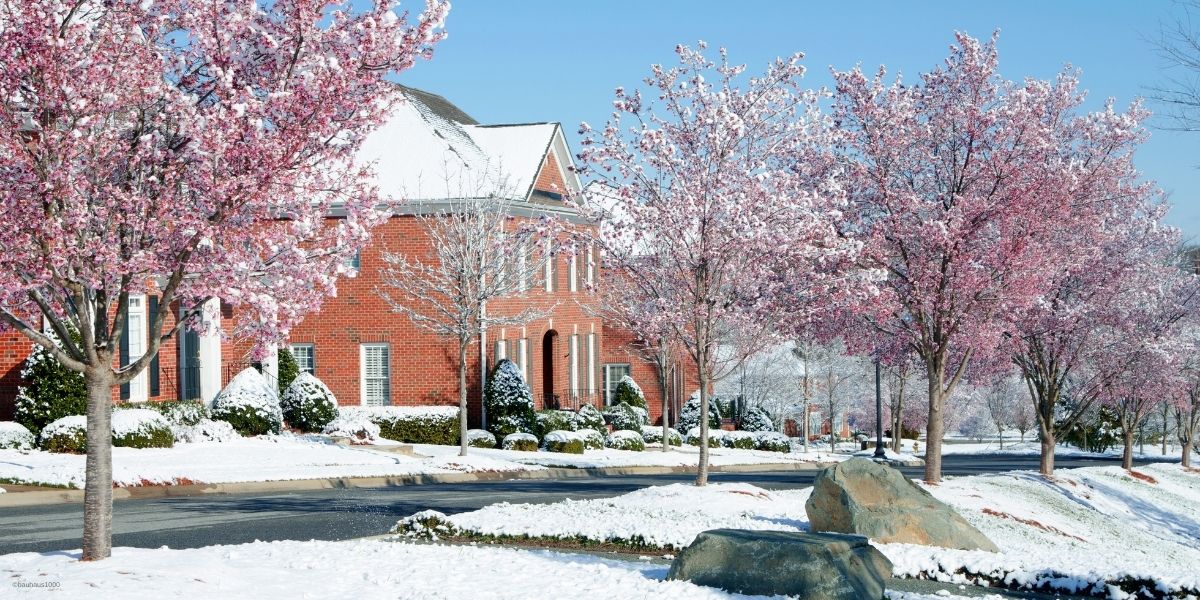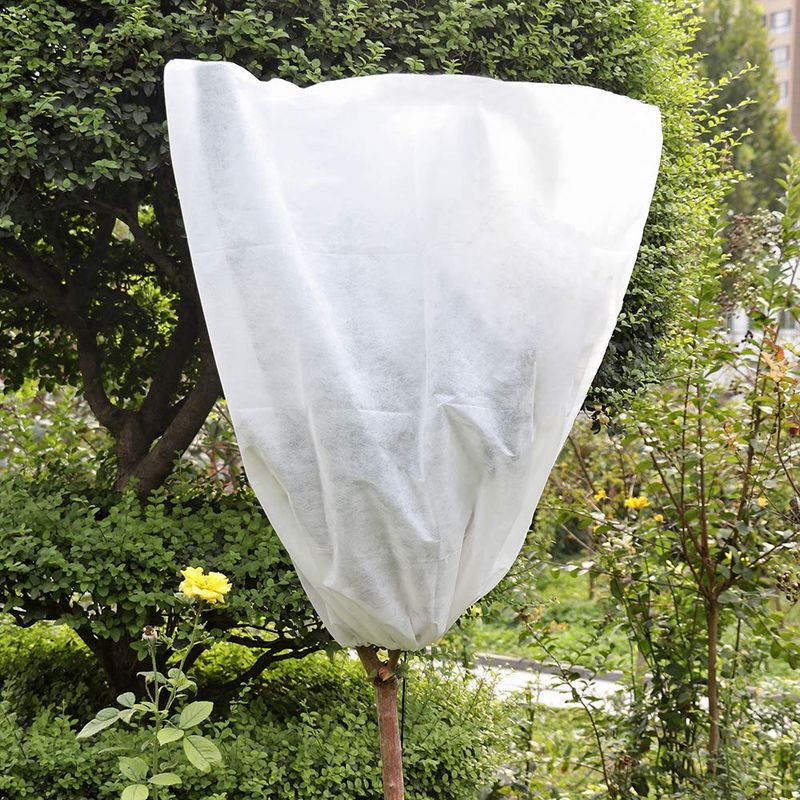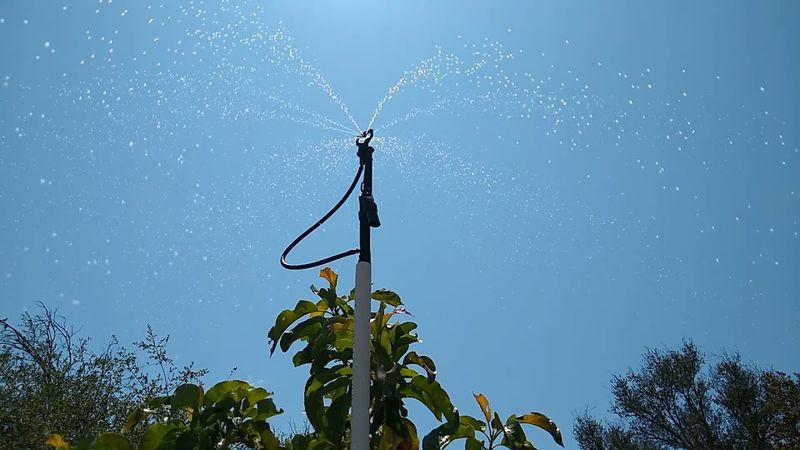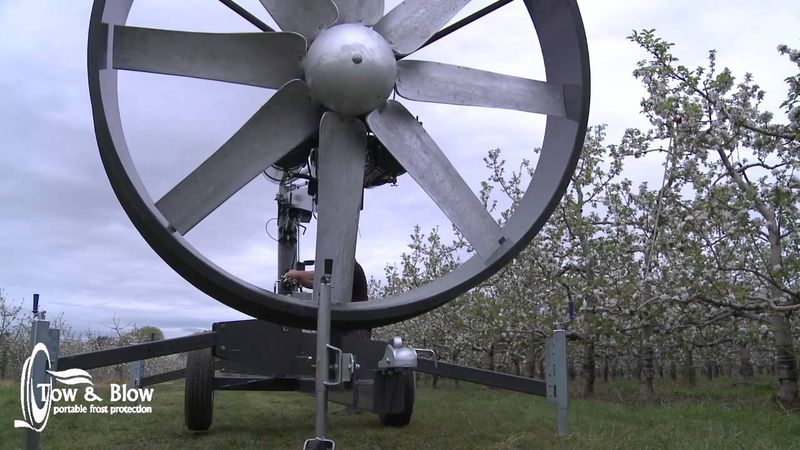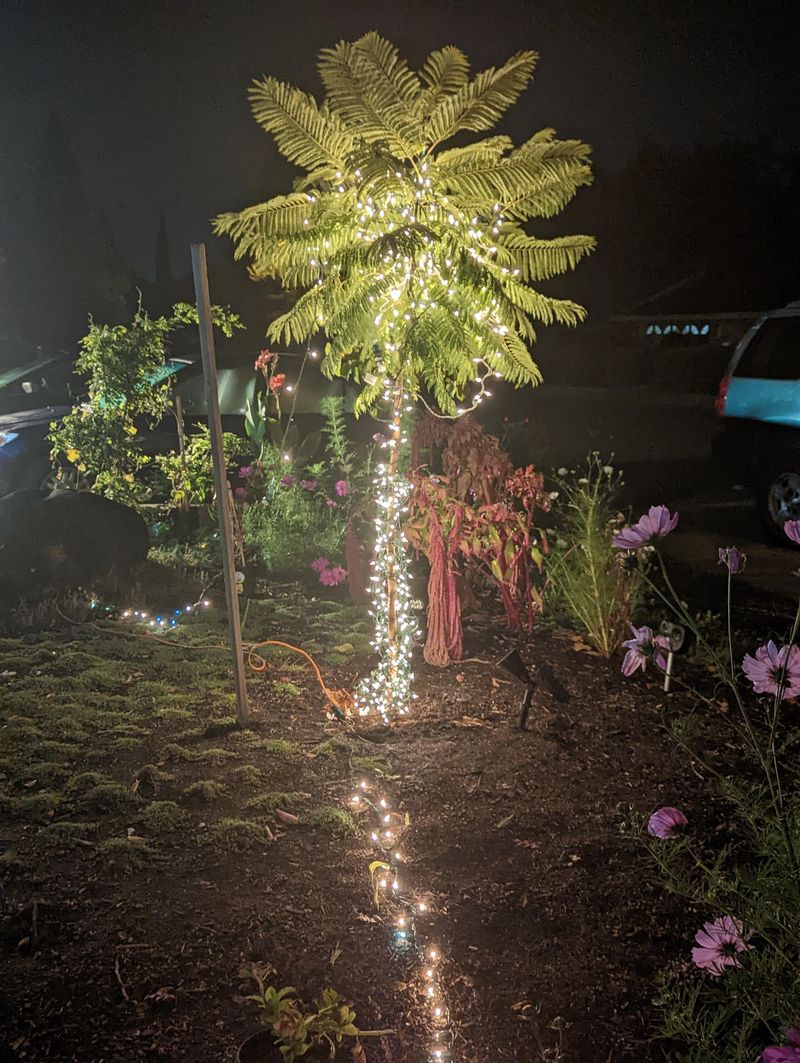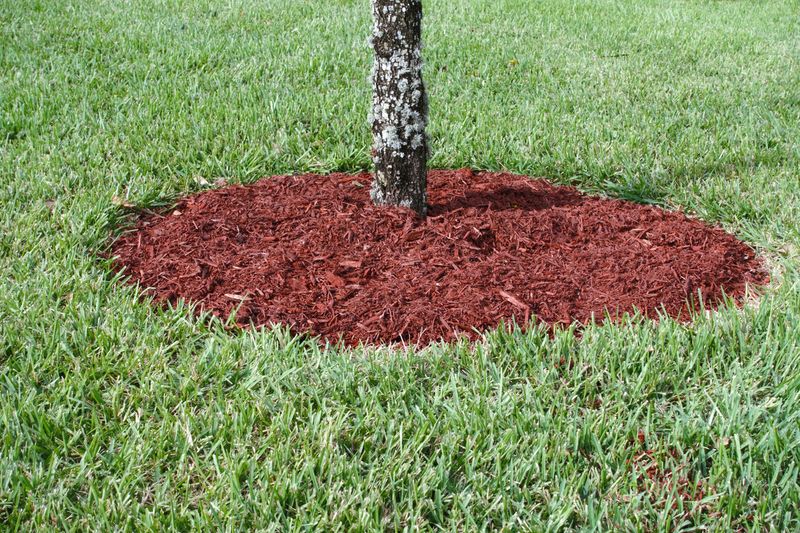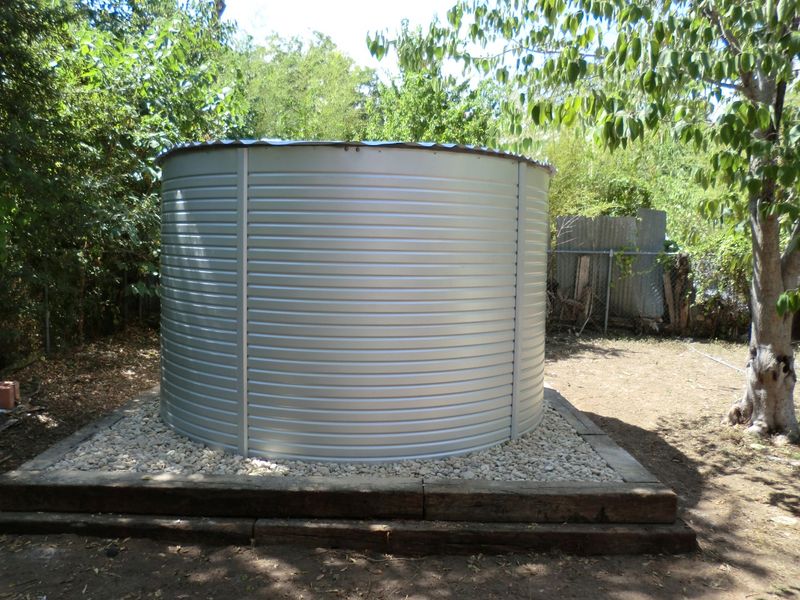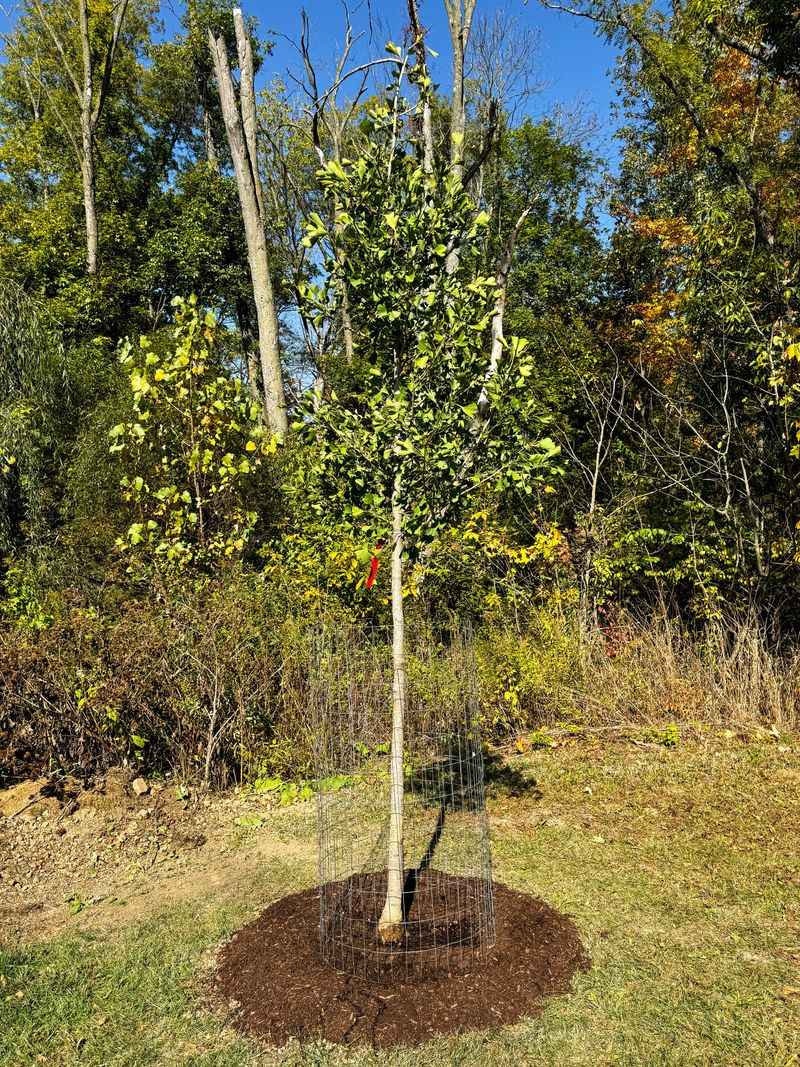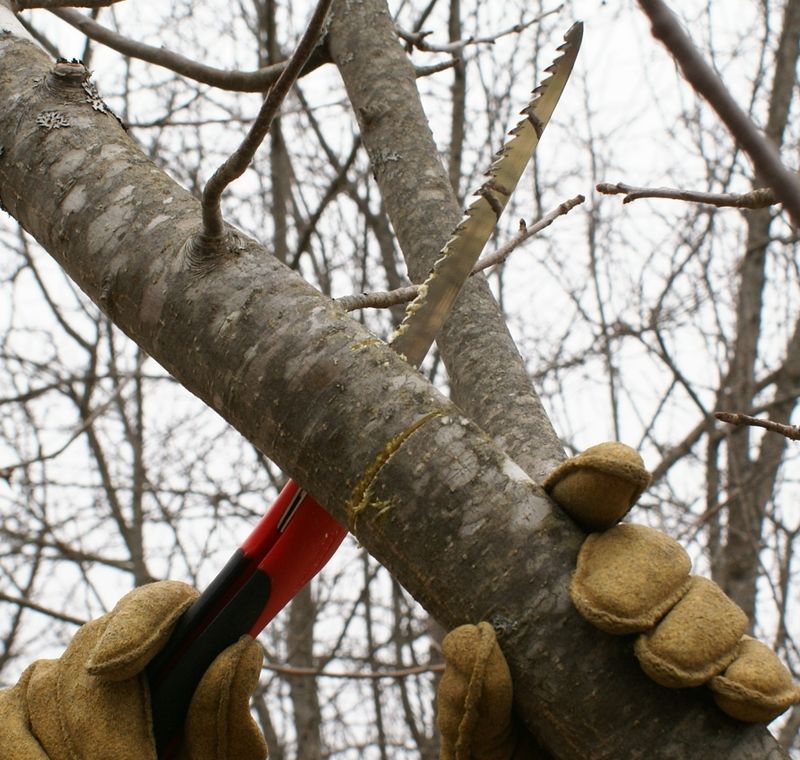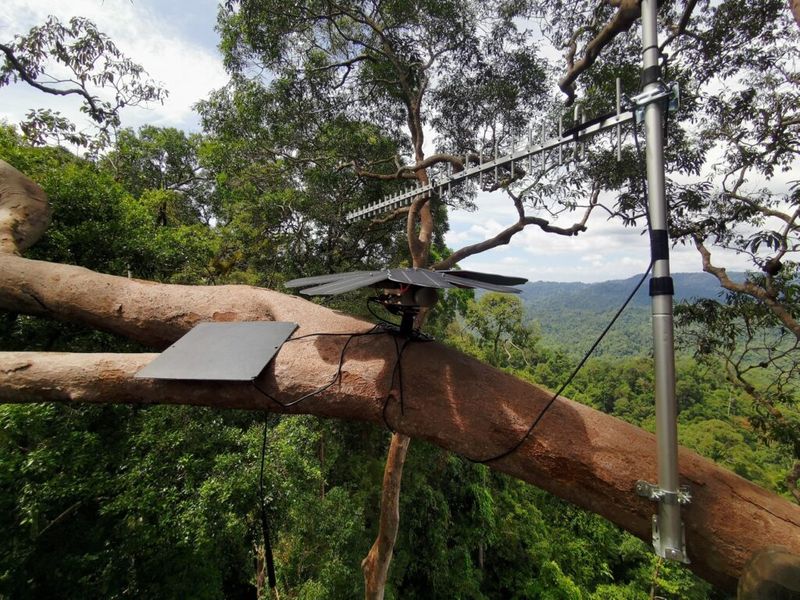Protecting early fruit tree blossoms from frost is essential for ensuring a fruitful harvest. Frost can damage or kill blossoms, affecting the tree’s ability to produce fruit.
Here are 9 effective tips to shield your blossoms from frost and give your fruit trees the best chance to thrive.
1. Frost Cloth or Blankets
Shielding fruit tree blossoms from frost is crucial during cold nights. Frost cloths or blankets are an effective solution. Lightweight and breathable, these materials trap heat and prevent frost damage.
Cover the branches in the evening and remove them in the morning to allow sunlight and airflow. Ensure the cloth reaches the ground to trap ground heat. Use stakes or supports to avoid direct contact with blossoms.
This method is particularly useful in early spring when blossoms are most vulnerable. Regularly check weather forecasts to know when to cover your trees.
2. Overhead Irrigation
Overhead irrigation involves using a sprinkler system to coat blossoms with water, which can protect them from frost. As water freezes, it releases latent heat, providing a slight warming effect.
This method requires precise timing and equipment. Begin watering just before temperatures drop to freezing and continue until the ice melts in the morning. Consistent water flow is essential to maintain protection.
It’s a delicate balance: too much water can damage trees, and too little won’t provide effective protection. This technique is widely used in commercial orchards.
3. Wind Machines or Fans
Wind machines or fans are effective in mixing air layers, preventing frost from settling. By circulating warmer air from above, these devices help reduce frost formation near the ground. Position them strategically to cover the entire orchard.
They are best used during clear, calm nights when frost risk is highest. Operating these machines is typically cost-effective and can significantly increase the temperature around the trees.
Monitoring systems can help determine when to activate them. This method is often used for larger orchards with significant frost risk.
4. Heaters or Frost Protection Lamps
Heaters or frost protection lamps provide a reliable way to raise ambient temperatures around fruit trees. Place heaters strategically throughout the orchard to ensure even warmth distribution. Fuel type and heater size determine effectiveness and range.
This method is labor-intensive but offers substantial protection, especially in severe frost conditions. It’s crucial to monitor fuel levels and ensure safety measures are in place to prevent fire hazards.
Combining heaters with other methods like wind machines can enhance effectiveness. This approach is popular in vineyards and high-value orchards.
5. Mulching Around the Base
Mulching is a simple yet effective way to moderate soil temperature and reduce frost penetration. Apply a thick layer of organic mulch around the base of fruit trees. This technique helps retain soil warmth by insulating the ground.
Mulch also provides added benefits like moisture retention and weed suppression. The best time for mulching is late fall or early spring. Ensure the mulch doesn’t touch the tree trunk to prevent rot.
Regularly replenish the mulch layer to maintain its effectiveness throughout the frost-prone period. It’s a low-cost, eco-friendly solution.
6. Water Reservoirs or Large Containers
Using water reservoirs or large containers can help protect fruit tree blossoms from frost. Water has a high heat capacity, meaning it releases heat slowly. Place containers near trees to create a microclimate that warms the surrounding air.
As water cools overnight, it releases stored heat, raising temperatures around the blossoms. This method is cost-effective and requires minimal maintenance. It’s ideal for smaller orchards or home gardens.
Ensure containers are filled before cold nights and monitor them regularly. Combining with other methods can enhance frost protection.
7. Planting in Protected Locations
Choosing the right location for orchard planting can significantly reduce frost risk. Areas with natural windbreaks, such as hills or gentle slopes, offer better air drainage and protection.
Cold air tends to settle in low areas, so elevated spots are advantageous. Plant trees on the south or southeast side of buildings or other structures to benefit from reflected heat.
Consider the microclimate and prevailing wind patterns when selecting orchard sites. This passive method requires no equipment and provides long-term benefits, making it ideal for new orchards or expansions.
8. Early Pruning Adjustments
Pruning adjustments can play a role in protecting blossoms from frost. Avoid heavy pruning during frost-prone times, as a denser canopy might help retain warmth. Prune selectively to maintain airflow while preserving heat around the blossoms.
Timing is crucial: late winter or early spring is the best period for pruning adjustments. Remove dead or damaged branches, but consider retaining some canopy cover.
Monitor weather conditions closely to decide when pruning is most appropriate. This method is part of an integrated approach to frost protection, complementing other tactics.
9. Monitoring and Forecasting
Monitoring and forecasting tools are essential for proactive frost protection. Use apps or sensors to track real-time temperatures and receive frost alerts. These tools help growers make timely decisions about implementing protective measures.
Weather forecasts provide valuable insights into upcoming conditions, enabling strategic planning. Advanced systems can integrate with irrigation or heating controls for automated responses.
Regular monitoring helps identify patterns and improve future protection strategies. Investing in technology enhances orchard management, reducing the risk of frost damage. It’s an indispensable part of a comprehensive frost protection plan.
